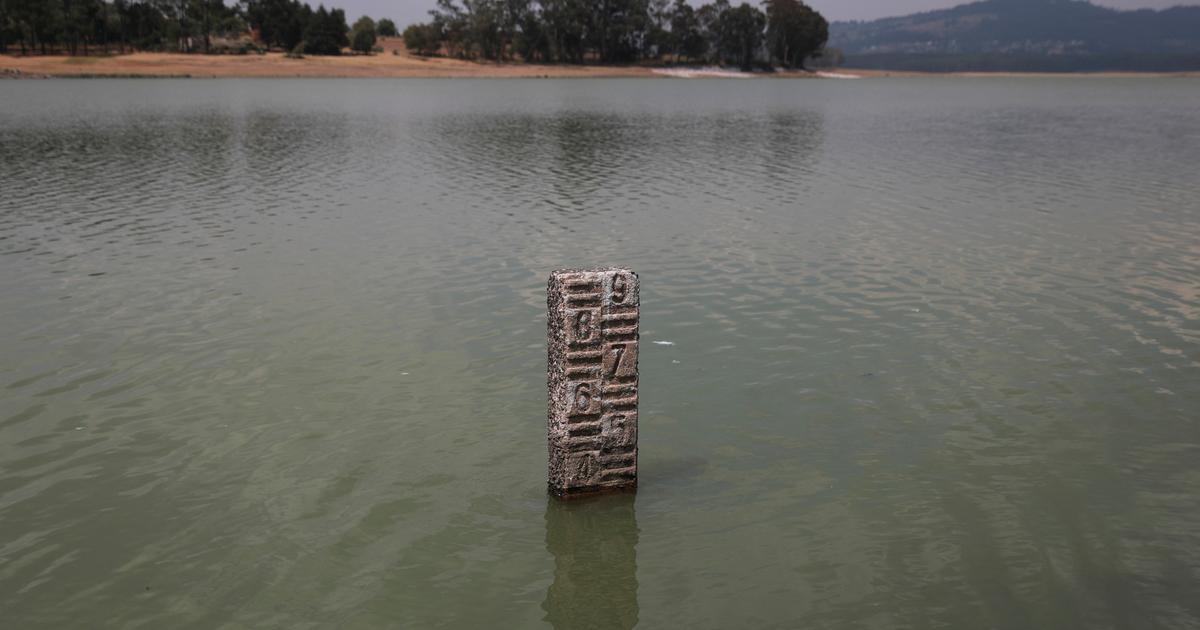The Aztecs, indigenous founders of Mexico-Tenochtitlan - capital of the Aztec Empire - had ingeniously built their capital in the middle of a series of bodies of water, a strategic choice which simultaneously ensured security and access to the resource whose man needs it most.
700 years later, the Mexican capital, which has a population of more than twenty million, is in the grip of a drought unprecedented in 1,200 years.
Therefore, day zero could occur as early as June 26, indicates an official from the National Water Commission (Conagua).
Day zero corresponds to the date on which the authorities of a community completely cut off the water supply because they are no longer able to provide the necessary water to their citizens.
The expression, translated from the English
"day zero",
has been widely used since the end of the 2010 decade, years from which a significantly increasing number of large cities were confronted with situations of acute water stress, image of Mexico or Cape Town.
Only 36% of water capacity
The megadrought that has hit the area between the southwest of the United States and down to Mexico City since 2000 is one of the longest in history, according to a study led by the University of California at Los Angeles ( UCLA) in 2022. This unprecedented drought has the effect of rendering ineffective the Cutzamala water retention system, a network of dams which, according to Sacmex (the Mexico City Water Supply System), provides 25%. water in the city and its surroundings.
According to a report from the National Water Commission dated March 7, 2023, the capacity of the Cutzamala system has fallen drastically, reaching only 36.2% of its capacity as of March 19.
A historic record.
Consequently, the authorities no longer hesitate to hypothesize a total cut off of the water supply to the capital if this drastic drop in the water level of the system were to continue.
In addition to climate change, which makes droughts more intense and heat waves more brutal, the resurgence of the El Niño climatic phenomenon during the year 2023 has only aggravated the crisis which was already affecting the fifth most populous city in the world.
Overexploited aquifers
The rainy season, which was already reduced, was shortened even further, which prevented the reconstitution of the water reserves essential to the survival of the city:
“Approximately 60% of the country was in a situation of drought”
in the end of January 2024, said MP Braulio Lopez
.
101 of the 653 aquifers - lands suitable for the storage and circulation of water - in Mexican territory are overexploited, he added.
In 2024, the rainy season is expected to arrive only towards the end of May.
Also, the population of the megalopolis must be patient before the possible arrival of a saving rain which would adjust the water reservoirs.
Other challenges in Mexico City include
“the low level of wastewater treatment,
(...)
the non-use of rainwater, leaks in water networks,
(...)
as well as the disordered urban growth
,” Fabiola Sosa Rodriguez, head of the growth and environment research group at the Autonomous Metropolitan University of Mexico, tells France24.
“Mexico must make water management a priority given the crisis the country is going through,”
in the words used last February by international water resources management consultant José Antonio Rodríguez Tirado to
Forbes Mexico
magazine .
Mismanagement
At the same time, the authorities asked residents to save water.
The Mexico Sacmex supply system has also developed a platform aimed at alerting populations in the event of cuts.
The Ministry of the Environment has set up a rainwater harvesting program, says
El País
.
Piping, filtering equipment, disinfection and water retention systems are provided free of charge to residents of municipalities with the highest levels of water shortage risk.
However, with socio-economic disparities being very high within the Mexican capital, not all residents can cope with drought in the same way.
“The poorest neighborhoods, perched on the heights of Mexico City, are bearing the brunt of the water crisis
,” diagnoses Luc Descroix, director of hydrology research at the Research Institute for Development, on France 24.
Read alsoNew dam on the Rhône: environmentalists point out a risk of pollution in a wild area
“We must consider that “Day Zero” is now, because the rivers are contaminated and the sources are overexploited
,” according to specialist José Antonio Rodríguez Tirado, present at the first Climate Parliament in the Mexican Chamber of Deputies.
One in three inhabitants
“receives water and sanitation intermittently”
in urban areas, while two thirds of individuals
“do not receive water services permanently”
in rural areas, he said. he then declared to the media of the Citizen Movement party.
In short, the Mexican water crisis is not primarily caused by the quantity of resources but probably more by their management.

